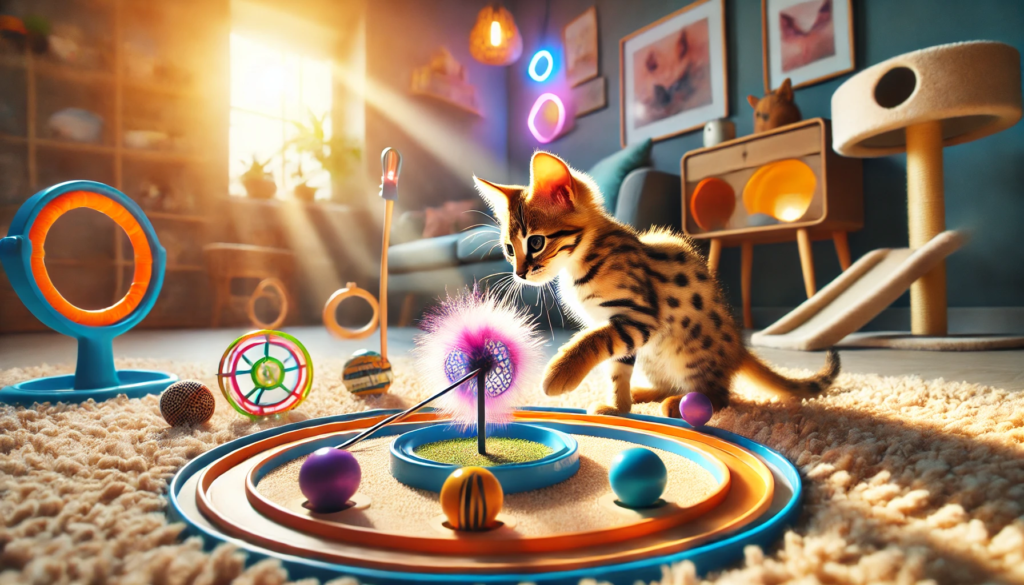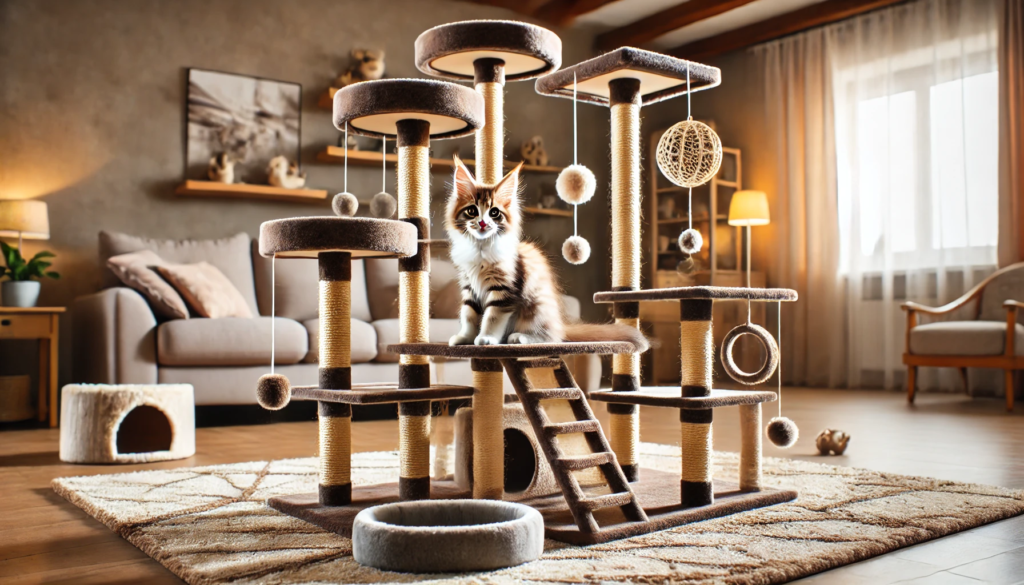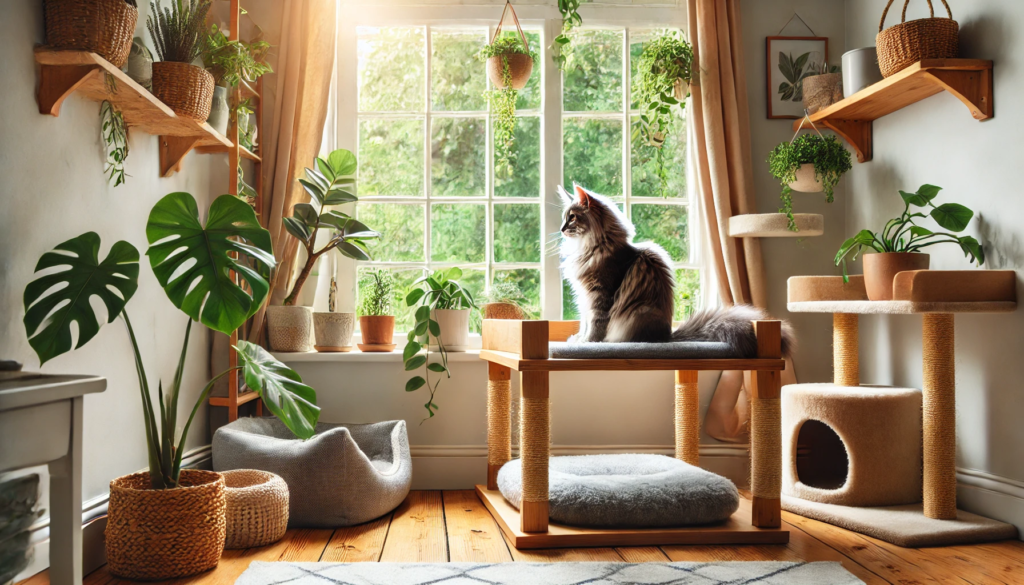The Purrfect Playground: How to Create a Stimulating Environment for Your Indoor Cat

Imagine being confined to your home, day in and day out, with nothing but the walls to keep you company. Sounds like a recipe for madness, right? Well, that’s exactly what life is like for many indoor cats. Without the right kind of stimulation and enrichment, your feline friend can become bored, anxious, or even depressed. So, how do you create a stimulating environment for your indoor cat? Let’s dive into the world of feline fun and mental enrichment.
The Importance of a Stimulating Environment
Cats are natural hunters, climbers, and explorers. When confined to an indoor space without the opportunity to engage in these instinctual behaviors, they can become understimulated. This can lead to various behavioral issues such as excessive meowing, scratching, or even aggression.
A stimulating environment helps prevent these issues by providing both mental and physical challenges. It keeps your cat’s mind sharp and their body active. But what exactly constitutes a stimulating environment for a cat?
Mental Stimulation: The Cat’s Meow
Mental stimulation is crucial for keeping your cat happy and engaged. Here are some ways to enrich your cat’s mind:
Puzzle Toys and Interactive Feeders
Puzzle toys and interactive feeders are excellent tools for mental stimulation. These devices require your cat to solve a puzzle to get a treat, mimicking the hunting experience. This not only keeps them busy but also satisfies their predatory instincts.
Training Sessions
Believe it or not, cats can be trained just like dogs! Teaching your cat simple tricks like “sit,” “stay,” or even more complex tasks can provide excellent mental stimulation. Use treats as rewards to keep them motivated.
Rotate Toys
Just like children, cats can get bored with the same toys day after day. Rotate their toys regularly to keep things fresh and exciting. Introducing new textures, shapes, and sounds can also add an extra layer of interest.

Physical Stimulation: Keeping Kitty Fit
Physical exercise is just as important as mental stimulation. Here are some ways to keep your indoor cat physically active:
Climbing Trees and Scratching Posts
Cats love to climb and scratch. Providing climbing trees and scratching posts can give them the opportunity to stretch their muscles and keep their claws healthy. Place these in different locations around your home to encourage exploration.
Laser Pointers
A laser pointer can provide endless entertainment for your cat. The unpredictable movements of the laser mimic the behavior of prey, making it an irresistible target for your feline friend. Just be sure to never shine the laser directly into their eyes.
Playtime with You
Spending quality playtime with your cat can be incredibly enriching for them. Use feather wands, toy mice, or even crumpled paper balls to engage them in play. This not only provides physical exercise but also strengthens the bond between you and your pet.
Social Enrichment: Feline Friends and Human Interaction
Cats are social animals that need interaction with both humans and other animals. Here’s how you can provide social enrichment:
Social Eating
Some cats enjoy eating in the company of others. If you have multiple cats, try feeding them together in a communal setting. This can mimic the social eating behavior seen in wild cats.
Introducing New Animals
If you’re considering adding another pet to your household, make sure to introduce them slowly and carefully. A new animal can provide companionship and additional stimulation for your cat.
Human Interaction
Never underestimate the power of simple human interaction. Petting, talking, and cuddling with your cat can provide immense comfort and emotional enrichment.
Signs of Depression in Cats: When Stimulation Isn’t Enough
Despite your best efforts, sometimes a cat may still show signs of depression or anxiety. Common symptoms include excessive sleeping, loss of appetite, hiding more than usual, or changes in grooming habits.
If you notice any of these signs, it might be time to consult with a veterinarian or a pet behaviorist. They can offer additional strategies tailored specifically to your cat’s needs.
Calming Techniques: Easing Feline Anxiety
Sometimes cats need a little extra help calming down. Here are some methods that can have a soothing effect:
Calming Sprays and Diffusers
Products like Feliway mimic feline facial pheromones that help reduce stress and anxiety. These can be especially useful during stressful events like moving or introducing new pets.
Soft Music or White Noise
Playing soft music or white noise can create a calming environment for your cat. There are even specially designed music playlists aimed at reducing feline stress.
Safe Spaces
Create safe spaces where your cat can retreat when feeling overwhelmed. This could be a cozy bed in a quiet room or a covered hideaway where they feel secure.
Cognitive Enrichment: Keeping Minds Sharp
Cognitive enrichment involves activities that challenge your cat’s brain:
Hide-and-Seek Games
Hide treats around the house for your cat to find. This not only engages their sense of smell but also provides mental stimulation as they search for hidden treasures.
New Experiences
Introduce new experiences gradually—whether it’s a new type of toy, different scents, or even short trips outside on a leash (if they’re comfortable with it). New experiences stimulate their curiosity and cognitive functions.
FAQs
What is a stimulating environment for a cat?
A stimulating environment for a cat includes mental and physical challenges like puzzle toys, interactive feeders, climbing trees, scratching posts, and social interaction.
How do I make my cat less crazy?
Engage your cat in regular play, provide mental and physical stimulation, and create a calm environment with safe spaces and calming products.

How to keep an indoor cat happy?
Provide a variety of toys, interactive feeders, climbing structures, social interaction, and regular playtime to keep your indoor cat happy.
How to keep an indoor cat entertained?
Rotate toys regularly, use puzzle toys and interactive feeders, and engage in play sessions to keep your indoor cat entertained.
How do cats show depression?
Cats show depression through symptoms like excessive sleeping, loss of appetite, hiding, and changes in grooming habits.
Conclusion: Crafting Your Cat’s Purrfect Playground
Creating a stimulating environment for your indoor cat is essential for their overall well-being. From mental puzzles and physical exercises to social interactions and calming techniques, there are countless ways to enrich their lives.
Remember, every cat is unique; what works for one might not work for another. Pay attention to your feline friend’s preferences and adjust accordingly. With a bit of creativity and effort
, you can turn your home into a purrfect playground that keeps your cat happy, healthy, and entertained for hours on end.
So go ahead—unleash those toys, set up those climbing trees, and engage in some quality playtime with your furry friend. After all, a happy cat makes for a happy home!

